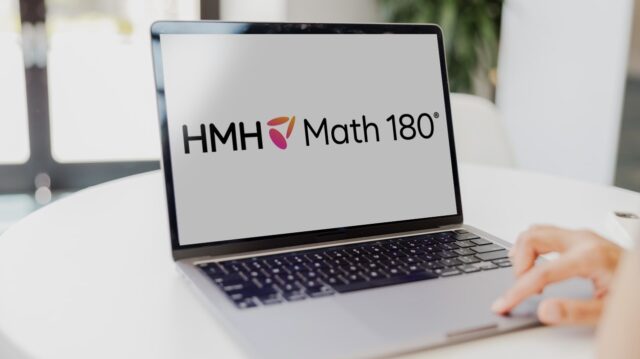
Discourse in learning mathematics
If you ever want to know how to solve a math problem, just ask the children. As a mom and an educator, I’ve had the opportunity to ask lots of children how to solve math problems.
My journey in math discourse first began with my two sons when I asked our oldest son Chris, a first grader, to solve a two-digit addition problem. He mentally got the sum before I did, so I asked him to solve another problem. Once again, his thinking was more efficient. I wondered what he knew that I didn’t, so I asked him to share his strategy. Let’s say the problem was 26 + 29. His response would have been, “20 + 20 = 40, and 6 + 9 = 15. Then, 40 + 15 = 55. What’s so hard about that, Mom?”
A few years later, my youngest son David, also a first grader at the time, came home excited that he knew what 9 – 10 was. Without knowing better, I took his excitement away when I responded, “You mean 10 – 9?” He gave me a puzzled look, and Chris said, “Let me handle this mom.” He asked David if he would have enough money to buy a toy truck if it cost ten dollars and he only had nine. David thought for a minute and then responded, “No.” “How much more money would you need?” asked Chris. “One more dollar,” said David. Chris told him that when he got older his teachers would tell him that 9 – 10 is –1, and that all it really meant is that he needed one more dollar. Chris knew the importance of helping David to make sense of the problem.
What is math discourse?
Math discourse can be defined as the verbal exchange of ideas in a classroom conversation. It broadly refers to both teacher-to-student discussion and student-to-student discussion, though it is student-to-student discussion that is most important and what this article primarily refers to. Effective discourse happens when students listen carefully to each other’s ideas and can explain both their own ideas and those of their peers.
A landmark publication from the National Council of Teachers of Mathematics (NCTM) is the 2014 book Principles to Actions: Ensuring Mathematical Success for All. It has eight specific effective teaching practices that provide a research-based framework to support teaching and learning. NCTM offers a free online executive summary of the book that lists all eight practices.
In particular, practice number four focuses on facilitating meaningful mathematical discourse, and practice number five focuses on posing purposeful questions. Let’s examine these two practices and what they entail.
Effective teaching practice #4: Facilitate meaningful mathematical discourse
The first step to engaging students in productive conversations is to set a learning goal. Consider what you want students to talk about and what questions you will pose to promote critical thinking. Choose open questions that have many correct answers or can be approached in multiple ways. When there is only one correct answer or solution path, there’s not much to discuss. Then, think through how the students’ conversations can work towards accomplishing your learning goal. How might students respond? What strategies will you choose to make public? How will you sequence the sharing?
Once you have established a learning goal and selected questions to pose, try utilizing the following Talk Moves, as laid out by Suzanne Chapin, Catherine O’Connor, and Nancy C. Anderson:
- Wait Time
- Turn and Talk
- Revoicing
- Repeating
- Say More
- Why do you think that? Tell me more.
- Agree or Disagree? Why?
- Add On
To learn more about each Talk Move and what it might sound like in your own classroom, HMH’s professional learning team has developed a free resource which is provided below.

Why are math talk questions important in promoting critical thinking?
In John Hattie’s 2023 meta-analyses synthesis of what educational influences most visibly improve learning, classroom discourse has an effect size of a whopping 0.82, well beyond an influence’s average effect size of 0.42. Why is math discourse such a large and critical part of both math teaching and learning? Chapin, O’Connor, and Anderson, suggest five reasons below:
- Math talk can reveal understanding and misunderstanding.
- Math talk supports robust learning by boosting memory.
- Math talk supports deeper reasoning.
- Math talk supports language development.
- Math talk supports development of social skills.
Effective teaching practice #5: Pose purposeful questions
Practice five from NCTM’s eight effective teaching practices focuses on posing purposeful questions. Picking the right questions and posing them at the right time is essential to promoting critical thinking. Get started with engaging your students in purposeful mathematical conversations by choosing the most appropriate learning goal(s) and trying some of the questions below.
Learning Goal: Solve word problems
The first step in helping students become problem solvers is to help them understand the problem. To support students in comprehending problems, try using the three reads language routine. In this routine, the problem is read three times, with the scaffolding and focus changing each time to support sense-making.
First Read: Focus on understanding the problem context and what is happening. Leave out quantities.
- Can you visualize what is happening in the problem’s story?
- What parts of the story do you know? (beginning, middle, end)
Second Read: Focus on understanding the quantities in the problem.
- What new information did we learn?
- What questions could we answer with this information?
Third Read: Focus on the question. Then consider what tools or representations could be used to model the problem and what strategies could be used to solve it.
After posing the problem-solving situation, engage students in a classroom discussion using some of the following questions:
- How might you get started with this problem?
- What idea would you like to try?
- Have you solved a problem like this one?
- What tool(s) could you use to model the situation?
- What operation(s) could you use to solve the problem?
- Will the answer be more than or less than _______? How do you know?
Learning Goal: Apply properties of operations
Problems often involve operating on numbers. As students will invariably have different comfort levels and approaches to arithmetic, this can be a source of rich math discourse.
- How would you find the sum/difference/product/quotient of these numbers?
- Which numbers would you add/subtract/multiply/divide first?
- What’s one way to solve this problem?
- Can you convince the class how you know your solution is correct?
- Did anyone else solve the problem like _________?
- Do you think this strategy will always work?
- Does anyone have a different strategy?
- True or false? How do you know? Turn and tell your partner. Be ready to share your thinking.

Examples of equations where asking students whether they are true or false can prompt rich discussion. The questions can be about sets of equations (like the examples on the left) or individual equations (like the examples on the right).
Learning Goal: Use strategies based on place value and properties of operations
After showing an open number sentence, such as $6.99 × 7, pose questions like:
- Tell me all you can about the product.
- What would be a good estimate?
- Is your estimate too large or too small?
- If you wanted to find the exact answer, how might you get started?
- Could you use more than one operation to solve this problem?
- What could you do to make this problem easier?
- Will your strategy always work?
- What is a situation that could be represented with this expression?
Learning Goal: Analyze and compare two- and three-dimensional shapes
After showing one or more shapes, pose questions like:
- How are these shapes similar?
- How are these shapes different?
- Which shape doesn’t belong? Why?
- What does this shape remind you of?
Learning Goal: Analyze data
After showing data displayed as a graph or table, pose questions like:
- What do you notice about the data? What statements could you make?
- What do you wonder about the data? What questions could you ask?
- What about the data shown surprises you?
- What conclusions can you make?
- What patterns do you notice?
- How could you represent the data in another way?
Helping learners grow
There are many ways we can help learners grow and support mathematical discourse in the classroom. To sum it up, here are some general strategies to help students engage with the math and encourage discourse.
- Choose open-ended questions.
- Ask “why” questions that expect students to justify their answers and defend their thinking and “how” questions that require students to explain their problem-solving approaches.
- Incorporate Talk Moves.
- Utilize language routines like the three reads routine.
- Be curious about students’ thinking.
Make questions an integral part of your mathematics lessons from beginning to end. Help your students find their mathematical voice!
***
Find ideas and opportunities for math talk with HMH Into Math and Into AGA. These math programs inspire students to see the value and purpose of math in their daily lives through rewarding, real-life activities and lessons.
Get our FREE guide “Optimizing the Math Classroom: 6 Best Practices.”












